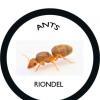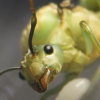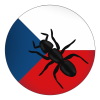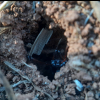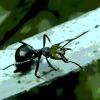Hold up. Can you PLEASE tell me how you caught liometopum
Well, that's actually quite a funny story. The first time I ever found one of these Queens was while swimming in Kootenay Lake. I was pretty unsure as to the species, but after a little time here on Formiculture some members were able to deem the species as Liometopum Luctuosum. So, now every time around Late May to early July, I'll check for Queens in our lake and along the shore. This year I forgot to actually film the process, mainly because it's kind of hard to film while swimming in a lake, but I have an idea for next year to make a whole video on how I catch my Queens. Thanks for the question!
Wait did it rain the day before? What kinds of trees are near your lake? I NEED TO KNOW i need liometopum
Liometopum are definitely A MUST have species. I usually wait for the first large rain of late May, and after that, whenever there's a day with high twenties temperature, with low wind speeds, that's usually your day. The trees are Douglas fir, and a bunch of cedars, I believe Liometopum is generally drawn towards more acidic species of wood.

